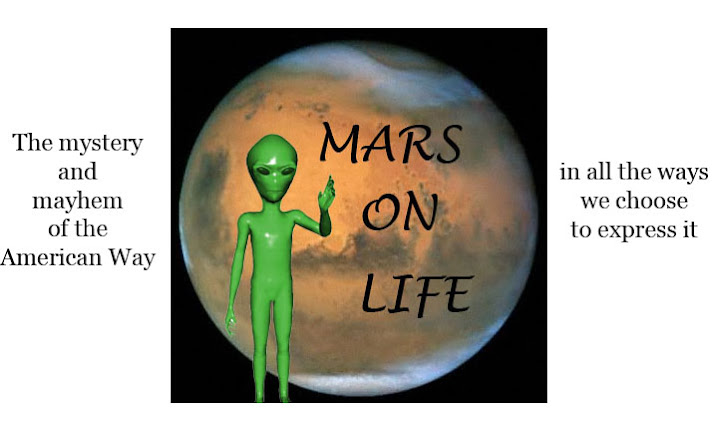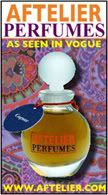
In July of 1971, Rolling Stone music critic John Mendelsohn said that Rod Stewart had the "most profound influence on rock & roll fashion since the Stones' Tour." The occasion for this comment was a review of Every Picture Tells a Story, the album that contained the hit single "Maggie May." One sentence later, Mendelsohn wrote that the singer was "the single most glamorous rock figure rolling."
You might remember Stewart sleazy in spandex from his "Do Ya Think I'm Sexy" era, seven years later. Abandoning his Gasoline Alley where "the milk's upon the door" for the big Los Angeles glitter ball of the mid-1970s, Stewart entered a renaissance era worlds away from the turf of Rod the Mod.
Stewart's past as the whitest wailer of deep-black blues had been built upon a foundation of lyrical translation; his brilliance was in being the oracle of the working class. He nearly always wore a woolen scarf, because it was nearly always cold. The sun didn't shine on the labor pool. Unlike Jagger, who mumbled and mimed his way across both the music and the class stratum, Stewart's osmotic empathy sounded like the last mortal fracture. Listening to the Jeff Beck Group, the Faces, and Stewart's first three solo outings was putting an ear to the human condition. It was also concrete proof that while adversity is a home truth, so is a balls-to-the-wall good time.
Stewart had a way of phrasing everyday strife that made working-class inconveniences into big questions. "Have you perished in the drizzling rain?" he asked, wearing "that old school coat to keep you from the wind." His glamour was that of eternal struggle wrapped in wardrobe remix, at least so long as he kept his uncertainty and his home base. Who was surer than he of the false front of make believe: "So what becomes of you, my love, when they have finally stripped you of the handbags and the glad rags..."
The glad rags of Rod the Mod were dictated by spontaneity and informality. He mixed individual pieces that were not so much reflective of trend as they were off-hand comments on improvisation: He made it up as he went along. Like his singing, his look didn't appear to have been cultivated. He wore his hair not as an accessory but as a mate; the shag haircut so favored by the British rock musician of the late 1960s became on Stewart a disobedient alter ego.
As soon as Stewart left his tartans in England, he found the stardust jumpsuit of Atlantic Crossing. His maribou boas, once a careless, insouciant gesture, became jet-set props. He lost his recklessness as he tried on his feminine Doppelgänger. No longer looking as if he'd arrived--hooch in hand--from the corner pub, Stewart zeroed in on the one thing that can always be counted upon: Los Angeles is glitzier, faster, dumber, flashier, and blonder than anywhere else on the planet.
Stroked by sun the way he used to be stoked by peat fire, the former busker and barroom belter took to California without a streak of the revelation that had made his former albums so emotionally resonant. Now that he had only Los Angeles to evoke, he changed his tune, abandoning his inner English Galahad to become a California caricature.
Stewart's understanding of California was opportunistic and full of innocent, eye-popping response. He consigned the Faces and his tartan scarves to the bum bin in order to pull on tiger-striped spandex and leg warmers. He was a kid in a candy playland, built just for him and his urgent need to assimilate into what he thought was California's primary culture: dreams and sex. It's a common mistake, and one that results in either abject failure or spectacular success. The latter is what keeps the fallacy alive, and for a man whose blues had run deep, he was defenseless in the face of the conceit.
Stewart surveyed Los Angeles with the eye of a broke fanatic. Money can buy you love and everything else, including bad taste. Los Angeles was a shopping mall of dubious idea, cheap bamboozle, and ad hoc passementerie. Gilding the lily with spandex or Swedish models was just one more way of spelling success to the lads back home, who could watch the whole thing go down on the Midnight Special.
Older fans rejected the new Stewart, whose disco efforts were as awkward as "Shattered" and "Miss You" were for the Stones. They felt Stewart had sold out, had become part of the commercial machine, but they were wrong. Stewart was simply reflecting the values important to him at that moment in time, and he was making more money than ever by doing so. To fans, Stewart was glamorous only so long as he was poor and vocal about it. Shared experience was what counted when listening to early Stewart. If your heart was ripped out, then so was his; if you huddled against the winter, he was sharing your coat.
Originally, glamour to Stewart was appropriation of mindset and behavior more than it was a wardrobe choice. Clothes, as you probably realize, are only half the battle. Spandex has its limits, even on rock stars. It does no one any good to pose without the correct position. Stewart was a polymorph, someone who could pick up and leave off a character as deftly as he had forsaken the blues for disco. If he lost his rawness to electric-blue elastic fiber  and the Top 40, then who could blame him? The sun is always hottest where money burns a hole.
and the Top 40, then who could blame him? The sun is always hottest where money burns a hole.
As L. A.'s culture of superficiality worked its magic on Stewart, he lost the tonality and texture he'd had previously. It was already too late. The new glamour was cheap and anonymous and belonged not to him but to whoever wore him out with her hot legs. Stewart was the perfect victim for Los Angeles from as far back as his street-busking days. Asking Stewart to warm his hands over a peat fire and sing the blues when he'd basked in the Los Angeles everglow was like asking Scott Fitzgerald to give up hooch and return to West Egg.
An old raincoat could let you down. So could spandex, but not where it counted, in the pocket. That's the L. A. lesson. Authenticity is for the birds, for art houses, and for Englishmen who go green in the noonday sun. Remember that the working class works and that minimum wage is no reflection of honesty.
Friday, March 14, 2008
An Old Raincoat Won't Ever Let You Down
Subscribe to:
Post Comments (Atom)









8 comments:
Perhaps Stewart was the forefather of the migrating English to LA.... and by and large most of them have made the transition permanent... something in the opportunistic air and 'Yes' culture that contrasts with our pessimistic 'No' weather in Old Blighty...
That picture has seared my retinas.
The Faces "Ooh La La" at the end of Rushmore is the best end of movie song, ever.
Oh, we all thought he was such a hottie back then!
wow you're a fantastic writer
Thank you for that lovely considered post. The fleeting glimpse of the Stewart pubes is considerably less lovely but I'm sure it was all part of the allure. Pubic hair is so terribly un-L.A.
Becky.
I really liked Stewart's older looks. This is a great post. I've never seen such an informed piece on Stewart—nobody digs as deeply as you do.
I wish I had known him in that era. My dad had his albums and looking at the pictures on the covers in 1989 as a kid, grossed the crap outta me. So I never got the allure.
As I sit here reading this post, on a rainy London afternoon, hugging my cup of tea for extra warmth, I'm reminded I will be in LA next week and think to myself, "I'm with you on this one, Rod!"
Post a Comment